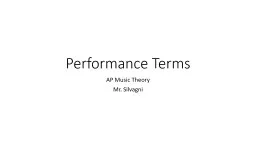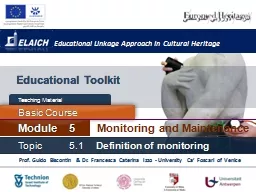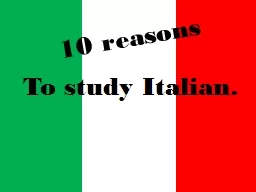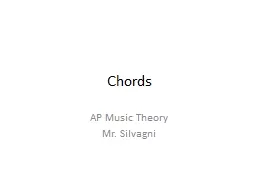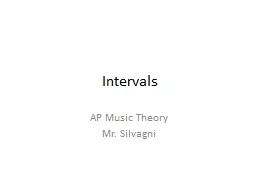PPT-Performance Terms AP Music Theory Mr. Silvagni Italian heritage
Author : debby-jeon | Published Date : 2019-11-03
Performance Terms AP Music Theory Mr Silvagni Italian heritage Most terms in music come from Italian though there are a few in French and German An exhaustive list
Presentation Embed Code
Download Presentation
Download Presentation The PPT/PDF document "Performance Terms AP Music Theory Mr. Si..." is the property of its rightful owner. Permission is granted to download and print the materials on this website for personal, non-commercial use only, and to display it on your personal computer provided you do not modify the materials and that you retain all copyright notices contained in the materials. By downloading content from our website, you accept the terms of this agreement.
Performance Terms AP Music Theory Mr. Silvagni Italian heritage: Transcript
Download Rules Of Document
"Performance Terms AP Music Theory Mr. Silvagni Italian heritage"The content belongs to its owner. You may download and print it for personal use, without modification, and keep all copyright notices. By downloading, you agree to these terms.
Related Documents

